The 10th
LaureatePainting
Robert Rauschenberg
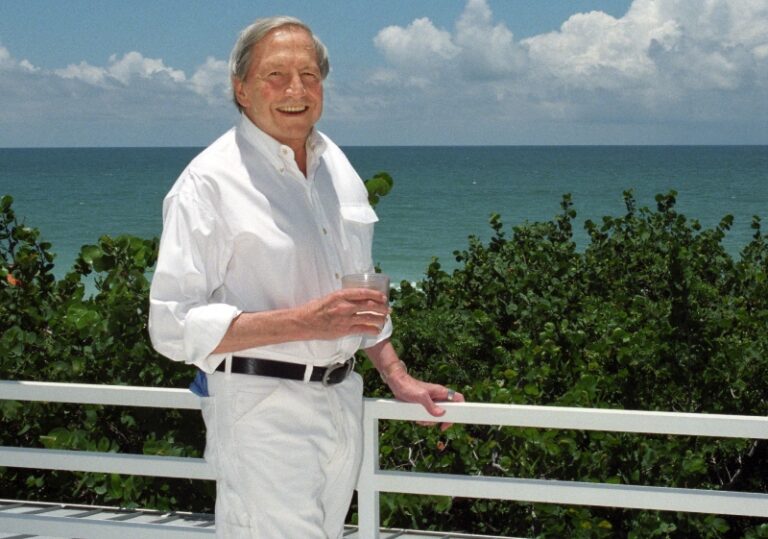
Early in Robert Rauschenberg’s career,a critic suggested he throw his work into the Arno river. He did. The same year he asked some well-known artists to give him a drawing to erase: the new hero of abstract expressionism,Willem de Kooning,complied. Such actions characterised Rauschenberg’s neo-Dada approach,aimed at collapsing the pretensions and ‘selfish ego trips’ of the art world. He made assemblages and ‘combine paintings’,mixing painted areas with real-life objects and collage elements,while his friendships and collaborations involved him in groundbreaking achievements in other areas,notably modern dance,with Merce Cunningham and music,with John Cage. Rauschenberg’s consistent brilliance has been seen in a flood of major exhibitions around the world. He is the superstar of the senior generation of American artists.
Biography
Robert Rauschenberg stands out for the energy and range of his creative pursuits. His art,always mobile yet persistent in its central concerns,has to be seen in a context of other creative activities notably his involvement in modern dance (primarily through his collaboration with Merce Cunningham’s dance company) as designer,performer and even composer,and his collaborations with engineers to develop projects that might counter art’s habitual ‘selfish ego trips’. The abstract expressionists’ insistent individualism provided his initial context. He had studied pharmacology and then served in the US Navy as a neuro-psychiatric technician,before pursuing art studies in Kansas City and in Paris in 1947–48. Attendance at Black Mountain College,1948–49,brought friendship with Cunningham and the composers John Cage and David Tudor. Further studies followed at the Art Students League in New York. He had his first New York exhibition in 1952. In 1953,after showing some new works in Florence,he followed a critic’s advice and threw them into the Arno river.
When he was awarded the Grand Prize at the 1964 Venice Biennale,the Vatican newspaper denounced it as proving ‘the total and general defeat of culture’. In fact it proved the defeat of a phase in,especially,American art that valued the rhetoric of spontaneity and individualism,averted from the real world,yet also demanded recognisable brand-images. Robert Rauschenberg’s work is instead marked by multiplicity and a peripatetic acceptance of the world,as well as by an unmistakable sense of theatre harnessed to a poetic,often allegorical,expression. It was as though he was intent on purging artworld pretensions. The privacy of the soul-searching artist: he mingled and he collaborated. The call for deep meaning: in 1951 he made series of first white and then black paintings,evading all interpretation. The moral and ultimately financial value of art: in 1953 Rauschenberg asked well-known artists to give him a drawing to erase,and Willem de Kooning (characteristically) complied. The status of fine art materials: Dirt Painting (for John Cage),1952,is mouldering earth in a shallow box,while in other assemblages he used rubbish alongside gold and silver leaf; in 1955 he chose the term ‘combine painting’ for assemblages in which paint and pictorial effects are as significant as the real things that are their main constituents,made the first major example,Bed,and began on the second,Monogram,1955–59,a stuffed Angora ram wearing a tyre as a belt and standing on a painting. The authenticity of spontaneous painterly gestures: Factum I and Factum II,1957,are in effect identical,repeating collage elements and imitating his own free brushstrokes; repetition undermines their supposed value as personal expression. The status of art images: in Rebus,1955,and many subsequent works he treated Old Master reproductions as equal to press photographs and comic strips. He was questioning the need for identifiable images,the status of sculpture as a separate art,and the status of symbolic signs and objects such as the stuffed eagle attached to Canyon,1959,even of time-honoured titles,as when he named a box bedecked with images of women,supported by a post that penetrates a pillow on a base,and crowned by a stuffed rooster,Odalisque,1955–58.
The negative aspects of Rauschenberg’s early work were noticed; it took time for his seriousness of purpose to be recognized. One pointer was his Thirty-Four Drawings for Dante’s ‘Inferno’,1959–60,elaborate transfer drawings using images from many sources. Their gravity was at once apparent,and a commentary written by Dore Ashton for their 1964 tour proved both their engagement to the text and their relevance to present concerns. In 1963 the Jewish Museum in New York had given Rauschenberg a retrospective; others soon followed,in America and abroad. Prizes and honours have been heaped on him,and he has responded by setting up Change,Inc.,a Rauschenberg Foundation and the Rauschenberg Overseas Culture Interchange,each of which is dedicated to helping artists and increasing public awareness,and in the case of ROCI also to developing convivial interaction by visiting and working with artists around the world – a 1991 show in Washington gave a celebratory finale to a global odyssey that had taken him,since the first exhibition in Mexico in 1985,from China to Cuba,via Japan,Russia and Malaysia.
At times nostalgic and indirectly autobiographical,Rauschenberg’s art signals generous but also critical responses to the contemporary world in sometimes modest-sized,sometimes vast paintings. The images incorporated in them hold our attention,but they are borne aesthetically by a sense of rhythm and monumentality that proves the artist’s rootedness in the art of the past. Some of his work is mechanised and includes assemblages in which viewers are invited to participate or the work responds to their presence. He has also made wholly abstract pieces,such as his ‘Jammers’ (1975),assemblages in which fabric and other materials are propped up against a wall. More characteristic is a 1994–95 series of white canvases bearing vivid images and patterns deposited on wax via a transfer method,accompanied by elusive titles such as Rap+Swell. Their masterly command of form and colour is self-evident and they engage us with composite,sometimes conflicting,meanings. No other contemporary artist has equalled Robert Rauschenberg’s command both of the aesthetic and the communicative function of art.
Norbert Lynton
He passed away on May 12,2008,Florida
Chronology
Robert Rauschenberg. a retrospective / Walter Hopps and Susan Davidson. with essays by Trisha Brown ... [et al.]. New York : Guggenheim Museum, c1997.
Robert Rauschenberg - between looking and longing / Robert Michael Chaplin. University of Sussex, 1992.
Robert Rauschenberg. anagrams / Robert Rauschenberg. New York : PaceWildenstein, c1996.
Off the wall. Robert Rauschenberg and the art world of our time / Calvin Tomkins. Doubleday : Garden City, 1980.
Robert Rauschenberg / Robert Rauschenberg. London : Tate Gallery Publications Department, 1981.
-
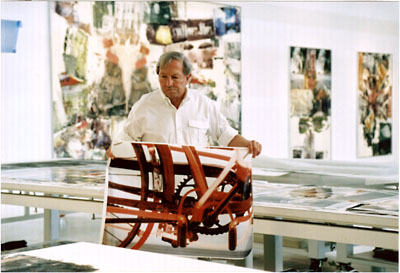
Robert Rauschenberg in his studio, 1998
-
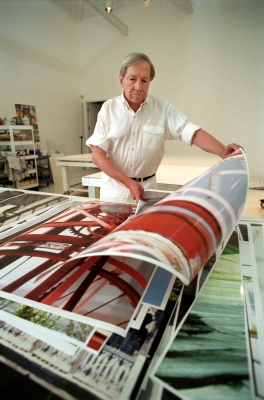
Robert Rauschenberg in his studio, 1998
-
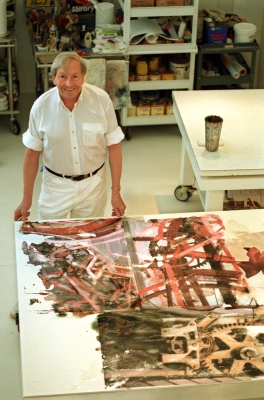
Robert Rauschenberg in his studio, 1998
-
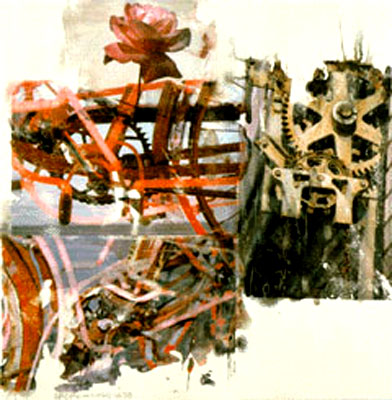
Light Gear[Anagrams (A Pun)]

